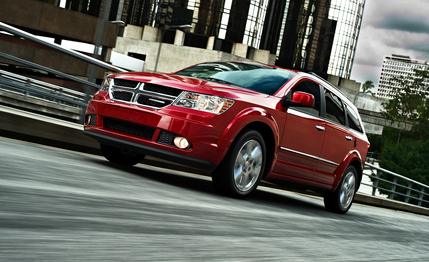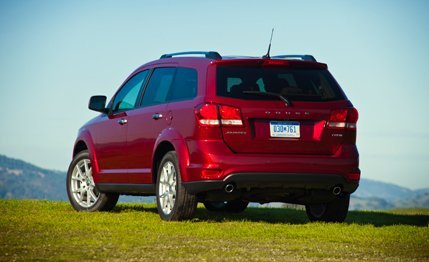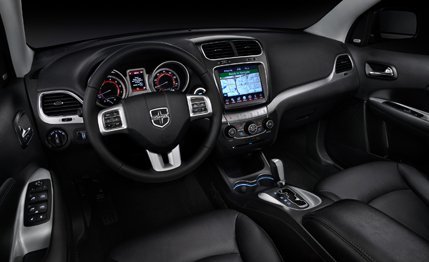 Instrumented Test
Instrumented Test

We were taken by surprise when we drove the revitalized 2011 Dodge Journey back in December 2010. Little more than a year removed from Chrysler’s bankruptcy, the company’s engineers and designers transformed one of the industry’s most hopeless vehicles into a genuine contender. Even more impressive, they did so not by starting with a clean-sheet design but with an aggressive refresh program targeting the underwhelming V-6, the sloppy dynamics, and the dollar-store interior.
The Journey’s about-face was nearly as dramatic as the Chrysler comeback that followed. The new Dodge crossover wasn’t just better—it was actually good. But it wasn’t until a 2013 Dodge Journey arrived at our office recently that we were able to put one through our test regimen to quantify exactly how the updates affected performance.

Stick with the Six
It’s important to note that not all Journeys have been exorcised of their pre-2011 demons. The Journey’s base powertrain is an anemic 2.4-liter four-cylinder paired with an antiquated four-speed automatic—only the lowliest front-drive trims get it. Fortunately, the upgrade is Chrysler’s well-mannered and lively 3.6-liter V-6 and a six-speed automatic. Our test model, a top-of-the-line 2013 Dodge Journey R/T, also brought a stiffened suspension, 19-inch wheels, and optional all-wheel drive. (You can’t get all-wheel drive without upgrading to the V-6.)
With 283 horsepower and 260 lb-ft of torque moving 4280 pounds of metal, the Journey feels sprightly in traffic. The V-6 only starts to come into its element around 3500 rpm, though, so you need to commit to the gas pedal to truly enjoy this engine’s best attributes—assertive power, minimal vibration, and rapidly rising revs.
It’s too bad the gearbox it’s forced to work with is so disappointing. For one, even though it’s possible to choose your own gears to keep the six-cylinder in the burliest part of its power band, the six-speed automatic’s manual shifting mode is so unintuitive and unresponsive that it’s best ignored. The transmission also has a hard time following the driver’s directions when left in drive. Under acceleration, downshifts can be slow, abrupt, or even absent, leaving the driver waiting and wondering. At least the transmission understands the drill when charging hard off the line, helping the Journey achieve 60 mph in a quick-for-the-segment 7.1 seconds. The 2013 thus hits the mark 1.2 seconds quicker than we recorded in our only test of the slovenly, prerefresh model, a 2009 Journey R/T AWD with its 235-hp, 3.5-liter SOHC V-6.

Bigger Brakes, Shorter Stops
With our skidpad blanketed in snow, we weren’t able to test lateral grip, but around town, the all-wheel-drive system and the Kumho Solus KH16 M+S tires provided all the traction we needed whether we were on snow-covered streets or sun-soaked, dry roads. At the test track, we measured the stop from 70 mph in 172 feet, a significant 17 feet shorter than the 2009 model did on the same type of tires. The difference can be attributed to larger front and rear brake rotors adopted as part of the 2011 redesign. The only mark against the Journey’s chassis is a matter of comfort. The R/T’s 19-inch wheels, 225/55 tires, and stiffened suspension make for a brittle and busy ride on rough roads. For a family crossover that’s tasked with tackling road trips rather than road circuits, it’s an inexplicable compromise. We’d shop for a Journey in SXT or Crew trim, both of which have softer suspensions.
Practicality over Performance
The late-blooming Journey’s best attribute has always been no-nonsense practicality as a family hauler, not performance. We like its pragmatic packaging in a body that’s neither too big nor too small, its ergonomically friendly and attractive interior, and its reasonable price. (Our heavily optioned R/T nears the top of the range at $34,305, but you can get its driveline for some seven grand less.) From our first drive, we knew the Journey’s update was worth every penny spent on development. Now that we’ve strapped our test equipment to the crossover, we can also state that Dodge got its money’s worth in acceleration and braking improvements.